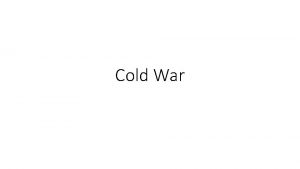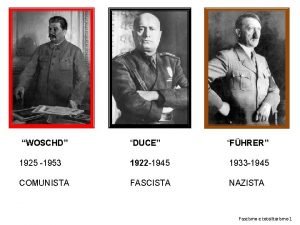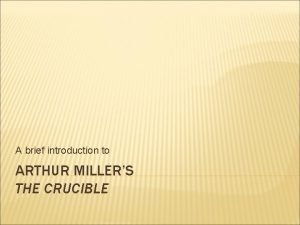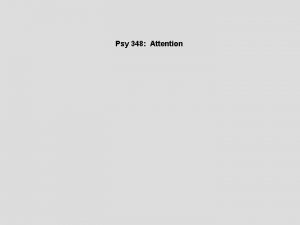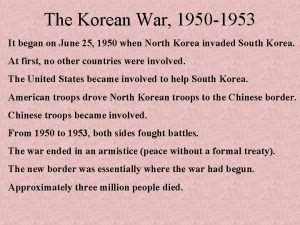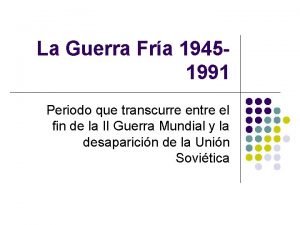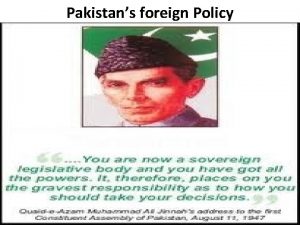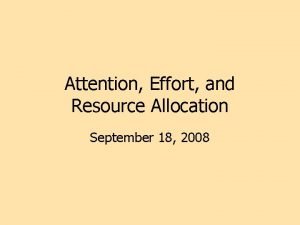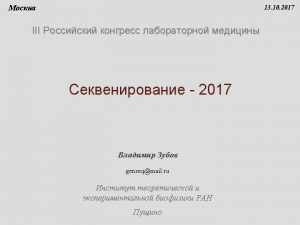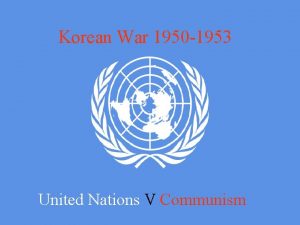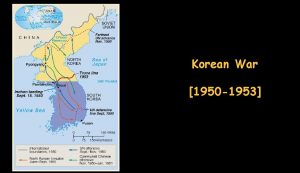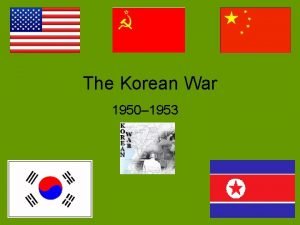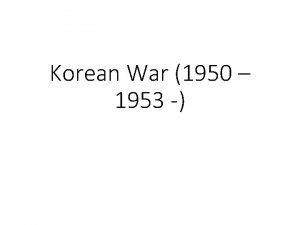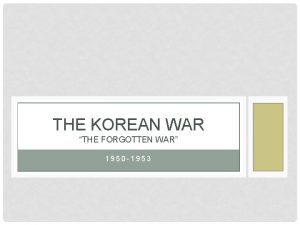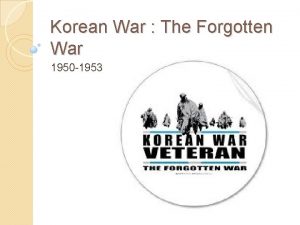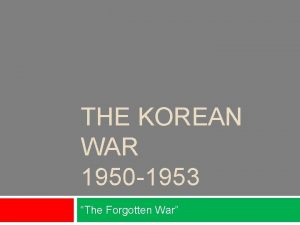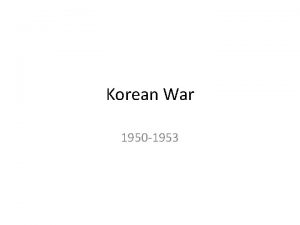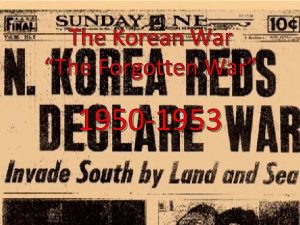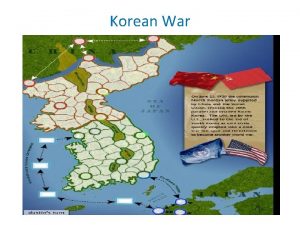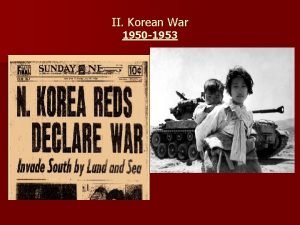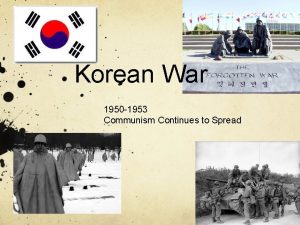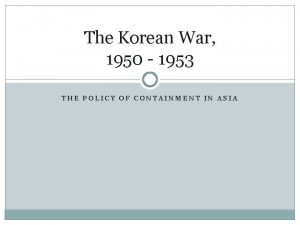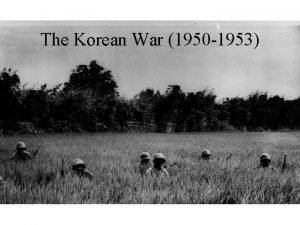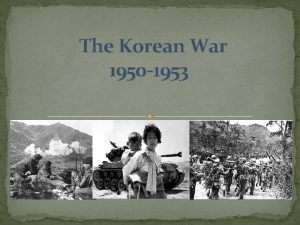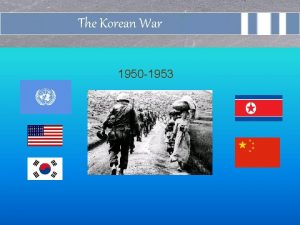The Korean War 1950 1953 The Korean War




















- Slides: 20

The Korean War 1950 -1953

• The Korean War was primarily the result of the political division of Korea by an agreement of the Allies at the conclusion of the Pacific War at the end of WWII. • The Korean peninsula had been ruled by the Empire of Japan from 1910 until the end of WWII. • Following the Japanese surrender in September 1945, American administrators divided the peninsula along the 38 th Parallel • US military forces occupying the southern half and Soviet military forces occupying the northern half.

• The failure to hold free elections throughout the Korean Peninsula in 1948 deepened the division between the two sides. • The North established a communist government, while the South established a capitalist one. • The 38 th parallel increasingly became a political border between the two Korean states. • Although reunification negotiations continued in the months preceding the war, tension intensified. • Cross-border violence and raids at the 38 th Parallel persisted.


• The situation escalated into open warfare when North Korean forces invaded South Korea on 25 June 1950. • It was the first significant armed conflict of the Cold War. • In 1950 the USA and other countries of the UN passed a security council resolution authorizing military intervention in Korea. • President Truman wanted to take a stand against “communist aggression. ”

• The USA (88% of foreign troops) and other members of the UN force (12% of foreign troops), came to the aid of South Korea in repelling the invasion. • Within 2 months they were pushed back to the Pusan Perimeter, a small area in the south of the country, before the North Koreans were stopped. • A rapid U. N. counter-offensive then drove the North Koreans past the 38 th Parallel and almost to the Yalu River. • The People's Republic of China (PRC) then entered the war on the side of North Korea.

Truman vs. Mac. Arthur • Douglas Mac. Arthur led the troops but was removed from command by President Truman. • Mac. Arthur wanted to push into troops into China but Truman was more conservative. • The American people became frustrated with the war and elected Dwight Eisenhower as their new president.


• The Chinese launched a counter-offensive that pushed the UN forces back across the 38 th Parallel. • The Soviet Union materially aided the North Korean and Chinese armies. • The active stage of the war ended on 27 July 1953, when the armistice agreement was signed. • The agreement restored the border between the Koreas near the 38 th Parallel and created the Korean Demilitarized Zone (DMZ) a 2. 5 -mile wide buffer zone between the two Koreas. • Minor outbreaks of fighting continue to the present day.

• With both North Korea and South Korea sponsored by external powers, the Korean War was seen as a “proxy war. ” • It combined strategies and tactics of both WWI and WWII: 1. A mobile campaign of quick infantry attacks 2. Air bombing raids 3. Became a static trench war by July 1951.

Casualties • Approximately 35, 000 people killed. • Approximately 8, 000 Missing in Action. • Total civilian casualties during the war were estimated at 2 million killed.


Navy vessels used in amphibious assaults



Edward Scanlon- US Naval Reserve

Arthur Calogero- Marine Infantry


38 th Parallel Then and Now

Pan Mun Jom, Korea
 War of the worlds 1953
War of the worlds 1953 Korean war vietnam war venn diagram
Korean war vietnam war venn diagram Sclc and sncc venn diagram
Sclc and sncc venn diagram July 26 1953
July 26 1953 Donald broadbent theory
Donald broadbent theory 1924-1953
1924-1953 Fhrer
Fhrer Modal model of memory
Modal model of memory Arthur millers drama fra 1953
Arthur millers drama fra 1953 Cherry 1953 dichotic listening
Cherry 1953 dichotic listening 1953
1953 La maxima tension 1947 y 1953
La maxima tension 1947 y 1953 According to mudaliar commission school activities are
According to mudaliar commission school activities are Alignment with west 1953-62
Alignment with west 1953-62 Nasser and prokofiev rockefeller
Nasser and prokofiev rockefeller Cherry 1953 dichotic listening
Cherry 1953 dichotic listening The crucible 1953
The crucible 1953 2007-1953
2007-1953 Fahrenheit 451 1953
Fahrenheit 451 1953 Kiss of judas 1955
Kiss of judas 1955 Korean war
Korean war



